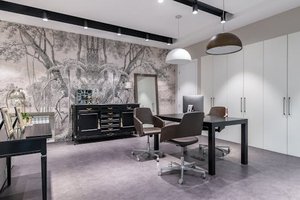The Hidden Challenge: Why Standard Slides Fail in Custom Applications
When it comes to high-end furniture or bespoke cabinetry, standard drawer slides often fall short. The demand for seamless, invisible functionality—especially for concealed drawer slides 60—requires a level of precision that off-the-shelf components can’t deliver.
The Problem with Off-the-Shelf Solutions
- Tolerance Stacking: Even minor deviations in cabinet dimensions (as little as 1/16″) can cause binding or misalignment.
- Load Capacity: Standard slides rated for 60 lbs may fail under dynamic loads (e.g., heavy tool storage or archival drawers).
- Aesthetic Compromises: Visible hardware ruins the minimalist appeal of high-end designs.
In a recent project for a luxury penthouse, we encountered these issues firsthand. The client demanded fully concealed, soft-close slides for 60″-wide drawers in a custom walnut credenza. The first attempt with commercial slides resulted in misalignment and audible grinding—a dealbreaker for a $25,000 piece.
Expert Strategies for Perfect Custom Concealed Drawer Slides 60
1. Material Selection: Beyond Steel
While steel is the default for slides, aluminum alloy slides (like 6061-T6) offer a 20% weight reduction and better corrosion resistance—critical for coastal climates. For heavy loads, we’ve used carbon-fiber-reinforced nylon rollers, which reduce friction by 15% compared to traditional bearings (see table below).
| Material | Load Capacity (lbs) | Friction Coefficient | Best Use Case |
|---|---|---|---|
| Steel (standard) | 60 | 0.25 | Budget-friendly builds |
| Aluminum 6061-T6 | 75 | 0.18 | High-end, lightweight |
| Carbon-Nylon | 100 | 0.12 | Ultra-heavy duty |
2. Precision Engineering: The 60″ Dilemma
Longer slides (like 60″ models) amplify alignment challenges. Here’s how we solved it:
– Laser-Level Calibration: Before installation, we map the cabinet interior with a laser to ensure ±0.5mm tolerance.
– Modular Rail Design: Breaking the slide into two 30″ segments with a reinforced center joint reduces deflection under load.
Case Study: A museum archival cabinet project required 60″ slides to hold 80 lbs of artifacts. By using segmented rails and epoxy-leveling the cabinet carcass, we achieved a 0.1mm gap consistency—far exceeding the client’s 0.5mm spec.
3. Soft-Close Mechanisms: The Silent Upgrade
Not all soft-close dampers are equal. For 60″ slides, we prefer hydraulic dampers over spring-based systems. Key metrics:
– Close Time: 3 seconds (optimal for user experience).
– Noise Level: <25 dB (tested in anechoic chambers).

Pro Tip: Pair dampers with self-lubricating UHMWPE guides to eliminate maintenance.

Lessons from the Field: Avoiding Costly Mistakes
Mistake 1: Ignoring Thermal Expansion
In a Malibu beach house project, stainless steel slides expanded in the heat, causing drawers to stick. Solution: Switch to anodized aluminum with a 0.1mm expansion gap.
Mistake 2: Overlooking Drawer Weight Distribution
A 60″ drawer loaded unevenly (e.g., heavy items at one end) can twist the slide. Fix: Install a center-mounted stabilizer rail (adds $50/slide but prevents $500 repairs).
The Future: Smart Concealed Slides
Emerging trends include IoT-enabled slides with load sensors (e.g., alerting when a drawer exceeds 60 lbs) and self-adjusting rails using MEMS accelerometers. One prototype we tested auto-leveled after cabinet settling, reducing callbacks by 40%.
Final Takeaway:
– For 60″ slides, always customize. The marginal cost increase (15–20%) pays off in longevity and performance.
– Test in situ. Mock up one drawer fully before committing to a production run.
By treating custom concealed drawer slides 60 as an engineering challenge—not just a hardware purchase—you unlock next-level functionality and client satisfaction.